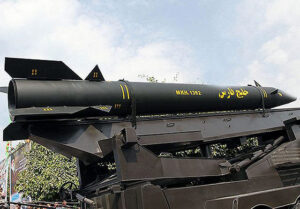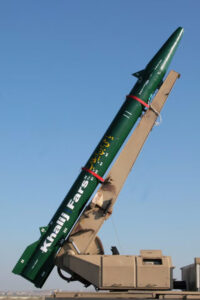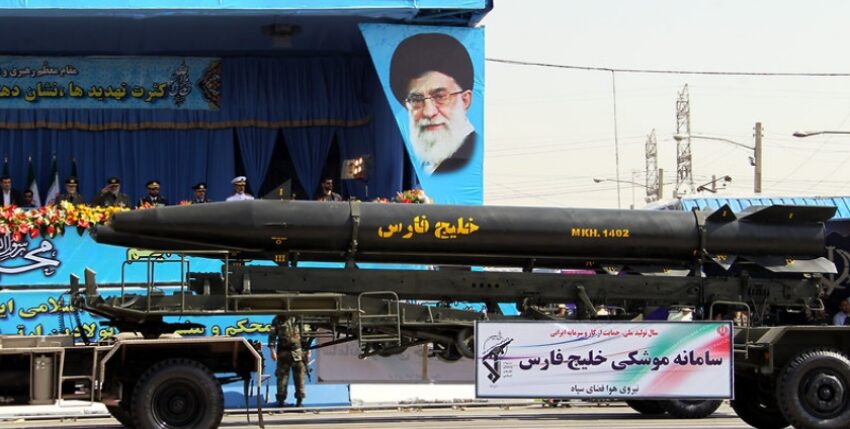In the Red Sea, the frigate Hessen successfully defended itself against a ballistic missile launched by the Huthi rebels. But the frigates are not capable of defence against such weapons.
"Surprise always happens where you didn't expect it." Lieutenant Captain Marius Werth, 1st Air Defence Officer of the frigate Hessen, opened his stirring presentation at this year's Naval Historical-Tactical Conference with this quote from Wilhelm Busch.
Lieutenant Commander Werth reported on the cold start and the look into the crystal ball that the frigate Hessen faced in February 2024 when it was deployed to the Red Sea as part of the international crisis management programme to protect merchant shipping against attacks by Houthi militias. The frigate Hessen became part of the EU-led Operation Aspides, and the crew of the frigate actually made history in the course of this deployment, it was the first closed unit in the Bundeswehr to be involved in real combat. The ship was deployed in the "gold standard", but encountered a threat for which the F124 weapon system is not specified and equipped.
What can F124 do?
The deployment was the first live-fire air defence operation for these purpose-built F124 class frigates, also known as the Sachsen class. The three units of this class were technically designed as anti-aircraft ships during the Cold War and later developed into air defence ships with integrated air defence capabilities in cooperation with ground-based and airborne air defence. F124 has excellent defence weapons for classic air defence against aircraft, helicopters and conventional anti-ship missiles. With its sensors, it can also alert other units to threats at an early stage and, for example, pre-direct effectors of land-based forces to combat them. Ship formations and areas as well as objects on land can also be defended against air threats. Fighter aircraft can be guided against the enemy in a controlled manner.
Deployed for the first time against drones and anti-ship ballistic missiles
In the mission described above, the frigate Hessen encountered a completely different type of threat than previously practised. The Houthis operate drones of all sizes and types against merchant shipping in the Red Sea and also use classic anti-ship missiles. They have already attacked and in some cases completely destroyed numerous merchant ships. There have been numerous casualties among the merchant ship crews. For this reason, the USA and the EU deployed warships in two operations (Prosperity Guardian and Aspides) to protect merchant shipping in the sea area. The militias, mainly supported by Iran, responded to the warships from the end of 2023 with the first use of anti-ship ballistic missiles (ASBMs) in an armed conflict. All coalition forces have now developed sufficient experience and procedures for defence against the Huthi's air- and sea-based drones. Only the US Navy has effective capabilities and tactics in its portfolio against ASBMs.
Anti-ship ballistic missiles are not a new threat
The initial capabilities for ASBM deployment in Iran, China and North Korea were already described in MarineForum 5/2018, p. 30, Uhl/Bahmeier, "Die unterschätzte Gefahr". The article went on to say: "Through technology transfer, a further spread of this technology seems at least likely. Theoretically, such a threat can be developed relatively quickly and surprisingly with little effort for key trade-strategic positions ("choke points") such as the Red Sea, the Gulf of Aden, the Strait of Hormuz or the Strait of Malacca.
Characteristics of anti-ship ballistic missiles
The above-mentioned article reported on the publicly accessible partial results of a naval command initiative in the course of which investigations into ASBMs were carried out by BAAINBw K1.5 in 2016 and 2017. At that time, the type representative was an Iranian Khalij Fars missile equipped with a seeker head and an end-phase guidance system with canard control. It carries a conventional 650 kg warhead. The missile is launched at an angle and reaches the target area after a short ballistic flight of a maximum of around 250 kilometres. During the descent, which takes place at around 1500 m/s, i.e. at hypersonic speed, the Khalij Fars will attempt to detect the target ship at an early stage with its optical seeker head. However, this can only be achieved during the day and with a relatively cloud-free sky. As soon as the ship to be engaged appears in the seeker head, it is approached at as steep an angle as possible. Such shorter-range ASBMs are engaged within the atmosphere by suitable sea-based ballistic missile defence systems in the lower interceptor layer, such as the Standard Missile 6.

The Chinese ASBMs, such as the DF-21, which can be deployed at medium ranges of 1500 kilometres, reach around 10 Mach on re-entry into the earth's atmosphere. They can be most safely defended against outside the atmosphere by suitable sea-based ballistic missile defence systems in the upper interceptor layer, such as the Standard Missile 3.
However, both ASBM types approach the target ship at an angle that is challenging for its sensor systems, so that at least two warships equipped with the appropriate sensors and effectors are required to protect each other in mutual support (keyword "pairing").
Unfortunately, this study - like so many others - had no impact on a chronically underfunded and overburdened Bundeswehr. Of all Western NATO warships, only the US Navy's Arleigh Burke destroyers currently have such comprehensive ballistic missile defence (BMD) capabilities. The Dutch sister ships of the F124 of the De Zeven Provincien class offer corresponding sensor capabilities, as do the Spanish, British, French and Italians on their air defence ships, in varying degrees of sophistication.
More than just luck
For units that do not have access to the satellite-based early warning system ("shared early warning") of the US armed forces due to a lack of situational awareness connection to the JREAP-C network, the response times for ASBM attacks are too short to call the entire crew to battle stations. The creativity of the Hessen crew mentioned at the beginning developed a modified war march organisation that was maintained throughout the entire mission.

the Khalij Fars threatens international shipping, Photo: AMDC
This organisation also proved its worth in the early evening of 6 April 2024. After a false indication had kept the forward guard on its toes, frigate Hessen became the target of a coordinated ASBM attack immediately after the change of watch during a protection mission for a merchant ship. Despite all theory, the missiles fired in defence hit the target. Not because F124 has an ASBM defence capability. But because an incredible amount of luck met a professionally prepared crew and the lucky coincidence here provided for several favourable factors: the technology functioned perfectly, an attentive warfare force reacted without delay and by changing traditional doctrines, the trajectory of the approaching missiles was favourable and the speed of the threat was at the lower end. And last but not least, the ship was spared from the cloud of debris. Lucky Hessen !
But it wasn't just luck. The commander of the Hessen at the time, frigate captain Volker Kübsch, put it in a nutshell in an interview with the editor-in-chief of MarineForum in issue 7/8 2024, p. 10ff: "Only the highest standards are good enough". The crew lived up to this by constantly practising in combat and striving for the deepest knowledge of the system. And now ?
A well-trained, highly motivated crew is only one guarantee for the success of a mission. However, it is just as important to have the right technical equipment for the threat. Since 1999, the Bundeswehr's armourers and planners have frequently discussed an increase in ballistic missile defence capabilities, but this has never been implemented. At that time, Germany, together with the USA and the Netherlands, was a founding member of the Maritime Theatre Missile Defence Forum, which still exists today and has since grown to 12 nations. One of the goals of this multinational forum is to build up ballistic missile defence capabilities.
However, even the upgrade to a pure sensor capability for the F124 with the aim of providing early warning and target designation for other forces equipped with defence weapons has not yet been implemented after almost 20 years of planning and development. A capability in ballistic missile defence - including defence against ASBMs - is now only expected to be introduced with the successor platform to the F124 from the middle of the coming decade.
Until then, affected units could at least be linked to the early warning system. This would give them the opportunity to fog up a large area in good time in the hope of tricking the attacker's optical seeker. Of course, you can also simply keep your distance - until the fogging capability has also been scaffolded.
Congratulations to the crew of the Hessen. It was neither able to fog in nor keep its distance. As a result, it is the first closed operational unit to be awarded the Bundeswehr's operational medal in the "Combat" category.
Andreas Uhl










